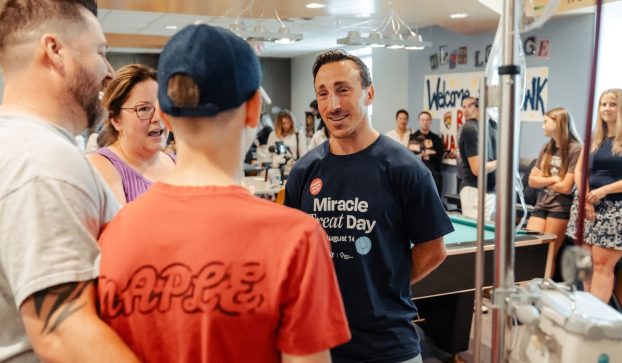
By Will Novosedlik
On Nov. 7 of last year, Maple Leaf Foods, the world’s first major carbon neutral food company, launched its third annual “Little Changes Day Home Challenge.” The campaign is aimed at helping Canadians identify the small changes they can make at home that will make a positive impact on the environment.
According to Janet Riley, VP communications and public affairs, research shows that 76% of Canadians recognize climate change is a critical issue and they want to have an impact, but feel overwhelmed by where to start. “So we created the day as a way to offer small things you could do that can add up to big impact,” says Riley. The suggested changes are things such as opting for package-free products to reduce plastics, conserving water usage and turning off lights when not in use.
But even if all of those concerned Canadians consciously engaged in the suggested little changes, we wouldn’t come close to off-setting the impact that industrial emitters would have if they committed to change. So, behind the scenes and beyond Little Changes Day, Maple Leaf Foods is working to promote and continue building upon its carbon neutral status and commitment to sustainability.
One of its long-term strategies is regenerative agriculture. This means promoting and adhering to farming practices designed to reduce emissions. Simultaneously, the practice improves soil health by allowing it to capture and sequester more carbon through actions like cover cropping, promoting crop diversity, protecting watersheds and integrating livestock into the farm system. According to a recent CBC article, agriculture is responsible for 10 percent of Canada’s greenhouse gas emissions. The government earmarked $270 million in last year’s federal budget to support agriculture and climate-smart solutions, including regenerative farming.
Maple Leaf has partnered with regenerative agriculture leader Indigo Agriculture with a purchase of verified carbon credits at an inaugural price of $20/tonne of carbon dioxide equivalents sequestered and abated. This allows Maple Leaf to directly finance growers’ transitions to cultivation practices that improve their soil health – and their profitability.
Maple Leaf raises 40% of its own hogs – a significant source of greenhouse gas emissions, and the biggest contributor to the company’s carbon footprint. So, it is investing in anaerobic digestion. “We send our animal waste to one of several anaerobic digesters in Ontario, for example, and they put that waste in an oxygen-free environment, allowing bacteria to break it down and capture the gas, which can then be used for fuel and fertilizer,” says Riley.
Animal welfare is another way in which Maple Leaf is living up to its brand promise. It is the largest producer of gestation crate-free pork in North America. Most hog farms place sows in narrow crates for the duration of their pregnancy. Their movement is limited, and food and water are automatically dispensed on a schedule, not necessarily when the hogs are hungry or thirsty. By comparison, Maple Leaf’s facilities allow the sows to move around freely and socialize – they are famously social animals. And when it comes time to transport hogs from farm to plant, they have created elevators to reduce the stress on the animals as they are loaded onto trucks.
For the benefit of consumers, Maple Leaf has built the Green Valley Barn, equipped with a viewing platform above the barn floor so you can watch the happy sows decide for themselves when to eat, drink, play and sleep. Over the years, Maple Leaf has built a relationship with the animal welfare consultant Temple Grandin, which advises on humane treatment of livestock.
To explain concepts like anaerobic digestion and regenerative agriculture to consumers, Maple Leaf launched its Green Glossary last year and will continue to develop that online. Other consumer-facing initiatives include promoting the company’s partnership with Earth Rangers, a conservation organization focused on families. “We’ve been working with them on an ‘all taste, no waste’ app for educating kids about the importance of preventing food waste. And we’ve been promoting how you can reinvent meals to prevent food waste: we call it ‘up cooking,’” says Riley.
To promote the program, Maple Leaf has enlisted the help of media personality Chef Sam, who has broadcasted demonstrations from the company’s commercial kitchen on outlets such as CBC, CTV and CityTV.
Maple Leaf stresses the importance of tackling sustainability from all sides – for the consumer, and from its own initiatives. “It’s not something we think about on occasion,” says Riley. “It’s integrated into every business decision we make.” The brand hopes its tenacity in these endeavours will inspire other companies to follow its lead, so large-scale efforts will contribute to slowing climate change.























